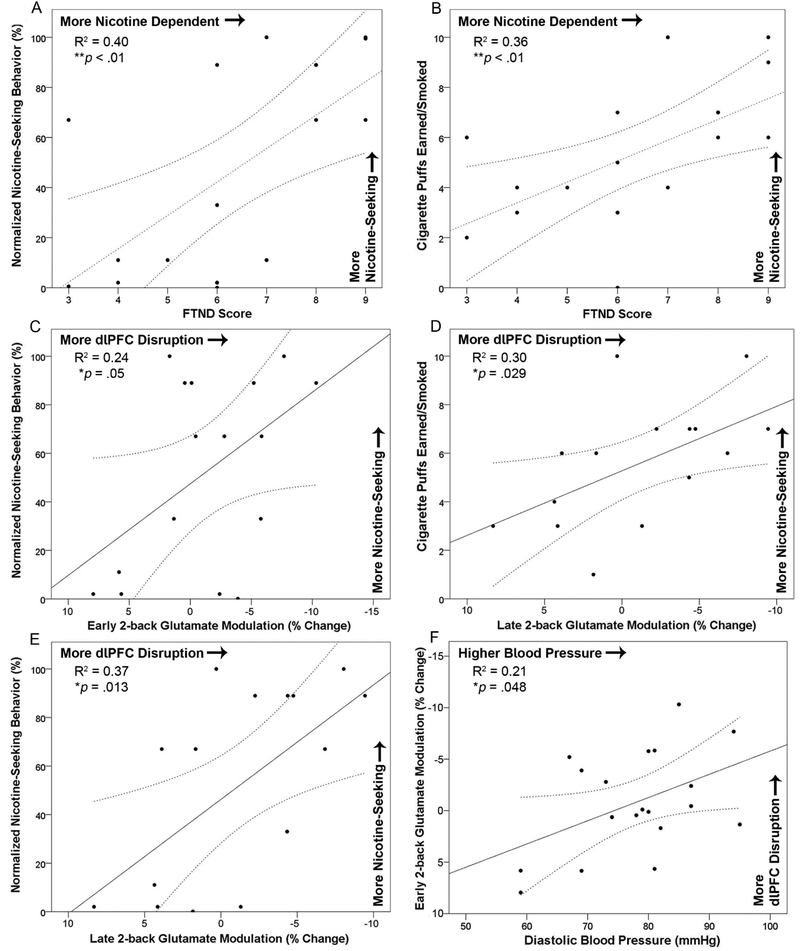Figure 4:
Upper Panel. During placebo, FTND score was significantly positively correlated with A) normalized nicotine-seeking behavior (R2=0.40, p<.01) and B) cigarette puffs earned and smoked (R2=0.36, p<.01). A linear trend was fitted to the data with 95% confidence intervals displayed as curved dashed lines. These correlations indicate that participants who reported higher nicotine dependence levels exhibited greater nicotine-seeking behavior during the placebo session, suggesting the puffs vs. money choice task paradigm has ecological validity. Lower Panels. The effects of stress on dlPFC glutamate modulation were linearly related to the effects of stress on nicotine-seeking behavior. During the stress session, greater dlPFC disruption was correlated with more nicotine-seeking across metrics; C) early 2-back glutamate modulation and normalized nicotine-seeking behavior (R2=0.24, p=.05), D) late 2-back glutamate modulation and cigarette puffs earned/smoked (R2=0.30, p=.029), and E) late 2-back glutamate modulation and normalized nicotine-seeking behavior (R2=0.37, p=.013). F) During the stress session, diastolic blood pressure was significantly correlated with early 2-back glutamate modulation indicating higher blood pressure was related to greater dlPFC disruption (R2=0.21, p=.048). Note: FTND = Fagerstrom Test for Nicotine Dependence; SEM = standard error of the mean.

